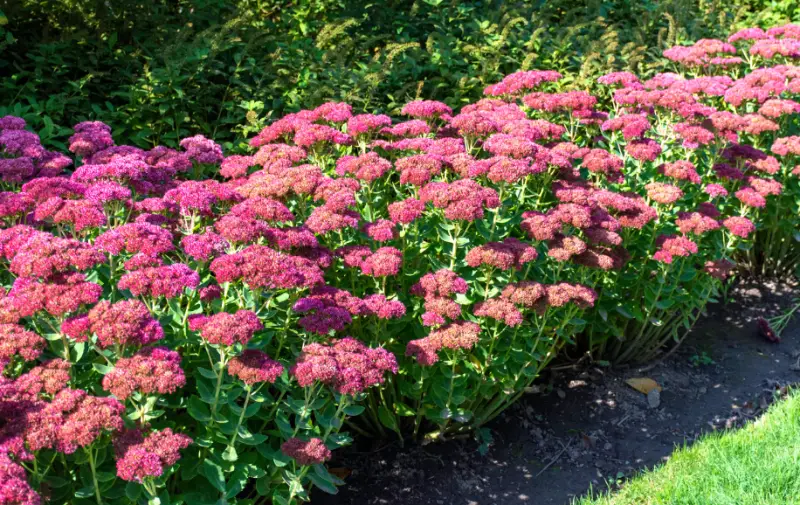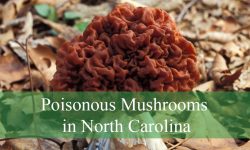Sedum, commonly known as stonecrop, is a versatile and low-maintenance succulent that thrives in various climates and conditions. With its vibrant foliage, charming blooms, and drought-resistant nature, it’s a popular choice for both novice and experienced gardeners.
This comprehensive guide will provide you with everything you need to know about growing and caring for sedum plants, ensuring they flourish in your garden or indoor space.
What is Sedum?

Sedum, commonly known as stonecrop, is a genus of succulent plants belonging to the Crassulaceae family. It is a diverse and adaptable group, encompassing over 600 species that vary significantly in size, form, and color. Sedums are native to various regions worldwide, including North America, Europe, and Asia, thriving in rocky terrains, mountainous regions, and arid climates.
These plants are well-known for their fleshy, water-storing leaves, which enable them to survive in dry conditions. Their unique ability to retain moisture makes them highly drought-tolerant and low-maintenance, appealing to both novice and experienced gardeners. Additionally, sedums produce clusters of star-shaped flowers that bloom in vibrant colors such as yellow, pink, red, and white, attracting pollinators like bees, butterflies, and hummingbirds.
Key Characteristics of Sedum Plants
- Succulent Leaves: Sedums have thick, fleshy leaves that store water, helping them endure dry spells. The leaves come in various shapes, including round, oval, and needle-like forms.
- Star-Shaped Flowers: The flowers are small but numerous, forming dense clusters that create a stunning display. These blooms typically appear from late spring to fall, depending on the species.
- Growth Habit: Sedums range from low-growing ground covers that spread quickly to upright, clump-forming varieties that create bushy mounds.
- Color Variations: Foliage colors vary from green and blue-green to shades of red, purple, and even variegated patterns, adding year-round interest to gardens.
- Cold and Heat Tolerance: Most sedums are cold-hardy, thriving in USDA hardiness zones 3 to 9, and can withstand high temperatures as long as they are planted in well-draining soil.
Benefits of Growing Sedum
- Drought Tolerance: Due to their water-storing leaves, sedums require minimal watering, making them ideal for xeriscaping and low-water gardens.
- Low Maintenance: Sedums are resilient and require little care, thriving even in poor soil conditions.
- Versatility in Landscaping: They are perfect for rock gardens, ground covers, containers, green roofs, and edging.
- Attracts Pollinators: The star-shaped flowers are rich in nectar, attracting bees, butterflies, and other beneficial insects.
- Erosion Control: Creeping varieties form dense mats that help prevent soil erosion on slopes and rocky landscapes.
Types of Sedum Plants
-
Creeping Sedum (Ground Covers)
- Sedum acre (Goldmoss Sedum): Compact and fast-spreading, with yellow flowers.
- Sedum spurium (Dragon’s Blood Sedum): Red-tinged leaves that deepen in color during fall.
- Sedum kamtschaticum (Russian Stonecrop): Glossy green leaves with bright yellow flowers.
-
Upright Sedum (Clumping Varieties)
- Sedum ‘Autumn Joy’: Large clusters of pink flowers that turn bronze in fall.
- Sedum ‘Brilliant’: Bright pink blooms with light green foliage.
- Sedum telephium (Purple Emperor): Dark purple leaves with contrasting pink flowers.
How to Grow Sedum
Sedums are known for their resilience and adaptability, making them an excellent choice for gardeners of all skill levels. These low-maintenance plants are suitable for a variety of settings, including rock gardens, borders, containers, and even green roofs. Their ability to thrive in diverse conditions, along with their vibrant foliage and delicate blooms, makes them a popular choice for enhancing garden landscapes.
Choosing the Right Location
Sedums flourish when planted in the right environment. Selecting an appropriate location ensures healthy growth and vibrant colors.
Light Requirements
Sedums thrive best in full sunlight. Providing at least six hours of direct sunlight each day encourages robust growth and enhances their natural color vibrancy. Although they can tolerate partial shade, inadequate sunlight may result in leggy growth and reduced flowering.
Soil Requirements
Well-draining soil is crucial for growing sedum successfully. These plants are highly susceptible to root rot in waterlogged conditions, so sandy or gravelly soil is ideal. If planting in heavier clay soil, amending it with sand or small stones will improve drainage. Additionally, sedums are not heavy feeders and can thrive in nutrient-poor soils, making them an excellent choice for less fertile areas.
Planting Sedum
Proper planting techniques are essential for ensuring the long-term health and vigor of sedum plants.
When to Plant
The best time to plant sedum is in the spring or early summer. Planting during this period allows the roots to establish themselves before the peak growing season. However, in milder climates, fall planting is also an option as long as the plants have time to root before the first frost.
How to Plant
Begin by preparing the planting site. Dig a hole that is twice as wide as the root ball but no deeper than its height. This approach allows the roots to spread out easily without sinking too deep into the soil. Carefully place the sedum into the hole, ensuring that the crown of the plant is level with the soil surface. This prevents moisture from accumulating around the stem, reducing the risk of rot. Once positioned, backfill the hole with the surrounding soil, gently pressing it down to eliminate air pockets. Water the plant lightly to help the soil settle, but avoid overwatering as sedums prefer dry conditions.
Propagation Methods
Sedums are highly versatile and can be propagated through several methods, each with its own advantages.
Division
Dividing mature sedum plants is an effective way to propagate them and rejuvenate older clumps. This method is best done every three to four years in either spring or fall. To divide, carefully dig up the entire plant, taking care not to damage the roots. Gently separate the root ball into smaller sections using your hands or a garden knife. Each division should have a healthy portion of roots and stems. Replant the divisions immediately at the same depth as the original plant, water them lightly, and provide adequate sunlight for continued growth.
Cuttings
Propagating sedum from cuttings is a straightforward method that yields quick results. Both stem and leaf cuttings can be used. To begin, select a healthy stem or leaf and cut it cleanly from the plant. Allow the cutting to dry for a day or two, which helps prevent rotting. Once dried, place the cutting in well-draining soil, ensuring that only the cut end is in contact with the soil. Water sparingly until roots develop, as excessive moisture can lead to rot. Within a few weeks, the cuttings will establish roots and begin to grow.
Seeds
Starting sedum from seeds requires patience but allows for growing unique varieties. It is best to begin the process indoors in early spring. Prepare a seed tray filled with well-draining soil and scatter the seeds on the surface. Lightly press them down without covering them, as sedum seeds require light to germinate. Keep the soil slightly moist but not soggy. Germination typically occurs within two to four weeks. Once the seedlings are strong enough, they can be transplanted outdoors, ensuring they receive ample sunlight and well-draining soil.
Caring for Sedum Plants
Sedums are known for their hardiness and low maintenance needs, making them a favorite among gardeners. Although they are relatively carefree, proper care ensures healthy growth, vibrant colors, and abundant blooms.
Watering Requirements
One of the key reasons for sedum’s popularity is its remarkable drought tolerance. These plants store water in their fleshy leaves, allowing them to withstand dry conditions with ease. However, appropriate watering is crucial to prevent issues like root rot.
In-Ground Sedums
For sedums planted directly in the ground, deep watering every two to three weeks during dry spells is sufficient. This infrequent but thorough watering encourages the roots to grow deeper into the soil, enhancing the plant’s drought resistance. In regions with regular rainfall, additional watering is often unnecessary. During cooler months or periods of high humidity, reduce watering to prevent over-saturation.
Container-Grown Sedums
Sedums grown in containers require slightly more attention due to faster soil drying. Check the soil moisture regularly by inserting your finger about an inch deep. If the soil feels dry at this depth, water thoroughly until it drains from the bottom of the container. Typically, watering once a week is adequate, but frequency may vary depending on the climate and container size. Ensure that the pots have drainage holes to prevent waterlogging, which can lead to root rot.
Fertilization
Sedums are not heavy feeders and can thrive in nutrient-poor soils, making them an excellent choice for low-maintenance gardens. Over-fertilization can lead to weak, leggy growth and diminished flowering.
When and How to Fertilize
To encourage healthy growth and vibrant blooms, apply a balanced, slow-release fertilizer in early spring as the growing season begins. This provides essential nutrients gradually, supporting the plant’s development without overwhelming it. Avoid high-nitrogen fertilizers, as they stimulate excessive foliage growth at the expense of flowers. A light application of compost around the base of the plant can also enhance soil quality without the risk of over-fertilization.
Pruning and Maintenance
Regular pruning helps sedums maintain an attractive shape, promotes better airflow, and encourages more vigorous flowering. Additionally, removing spent blooms and leggy stems keeps the plants looking neat and vibrant.
Upright Sedums
For tall, upright varieties, prune in late fall after the first frost. Cut back the stems to about an inch above the soil level. This prevents the plant from becoming too woody and encourages compact growth in the next season. The dried flower heads can be left through winter for added interest in the garden and as a food source for birds. However, if a tidier look is preferred, they can be removed earlier.
Creeping Sedums
Creeping sedums spread rapidly and can quickly cover large areas. To control their spread and maintain a desired shape, trim them throughout the growing season. Light pruning also encourages denser growth, enhancing their ground-covering effect. Use sharp, sterilized scissors or pruners to make clean cuts and reduce the risk of disease.
Pest and Disease Management
One of the great advantages of growing sedums is their natural resistance to most pests and diseases. However, under certain conditions, they can become susceptible to a few common issues.
Pests
Although sedums are generally pest-resistant, aphids and mealybugs can occasionally infest the plants. Aphids are tiny insects that feed on the sap, causing curled or distorted leaves, while mealybugs leave behind a white, cottony residue. To treat these infestations, spray the affected areas with insecticidal soap or neem oil. For minor outbreaks, a strong jet of water can dislodge the pests. Regularly inspect the plants, especially during warm, humid weather, as these conditions favor pest activity.
Diseases
The most common disease affecting sedums is root rot, typically caused by overwatering or poor drainage. Symptoms include yellowing leaves, wilting, and a mushy stem base. To prevent root rot, ensure the plants are in well-draining soil and avoid watering too frequently. If root rot is detected, remove the affected parts, improve soil drainage, and replant the healthy sections.
Sedum Plant Varieties to Consider
Sedums come in a wide range of shapes, colors, and sizes, making them a versatile choice for different garden settings. Whether used as ground covers, border plants, or focal points, these varieties offer stunning foliage and long-lasting flowers.
Sedum ‘Autumn Joy’
Description: This upright-growing variety features large, broccoli-like flower clusters that start as soft pink in summer, deepen to a rich rose, and finally turn bronze in fall. Its succulent, fleshy leaves store moisture, making it highly drought-tolerant. In winter, the dried seed heads provide interest and attract birds.
Best Use: Ideal for borders, cottage gardens, and container plantings, ‘Autumn Joy’ makes a striking focal point in garden beds. Its changing colors throughout the seasons add visual appeal year-round.
Sedum spurium ‘Dragon’s Blood’
Description: A low-growing, spreading sedum with vibrant green leaves that develop deep red tinges in summer and turn burgundy in fall. Clusters of bright pink, star-shaped flowers bloom in late summer, adding a burst of color. This variety forms a dense mat, making it excellent for ground cover.
Best Use: Perfect for rock gardens, pathway edging, and hanging baskets, ‘Dragon’s Blood’ thrives in tough conditions, including poor soil and drought-prone areas. Its ability to suppress weeds makes it a great choice for erosion control.
Sedum reflexum ‘Blue Spruce’
Description: Named for its resemblance to blue spruce needles, this sedum has soft, blue-green, needle-like foliage that creates a dense, spreading carpet. It produces small, bright yellow flowers in summer, attracting pollinators such as bees and butterflies.
Best Use: Suitable for xeriscaping, ground cover, and rock walls, ‘Blue Spruce’ thrives in dry, rocky soil and adds a unique texture to garden landscapes. It also works well in alpine gardens and mixed succulent containers.
Sedum telephium ‘Purple Emperor’
Description: This stunning variety boasts deep purple, almost black leaves that create a striking contrast against its clusters of soft pink flowers. It has an upright growth habit and adds bold color to any garden.
Best Use: Excellent for mixed borders, containers, and modern garden designs, ‘Purple Emperor’ pairs well with other sedums and ornamental grasses. Its rich foliage color makes it a standout feature in both sunny and partially shaded areas.
Creative Landscaping Ideas with Sedum
Sedums are incredibly versatile plants that can be used in various landscaping designs to create stunning and low-maintenance outdoor spaces. Their ability to thrive in challenging conditions, combined with their unique textures and vibrant colors, makes them an ideal choice for creative garden layouts. Here are some innovative ways to incorporate sedums into your landscape.
Rock Gardens
Rock gardens are perfect for showcasing sedums’ hardiness and architectural beauty. Their low-growing, spreading habit complements the rugged texture of rocks, creating a naturalistic, alpine-inspired look.
Design Tips:
Combine creeping sedums like Sedum acre and Sedum kamtschaticum with other alpine plants such as dwarf conifers and ornamental grasses. This mix provides contrasting colors and textures, adding visual depth and interest. Sedum acre’s bright yellow blooms pop against gray stones, while Sedum kamtschaticum’s golden flowers and glossy green leaves add warmth.
Position the sedums to cascade over rocks or fill crevices, softening the harsh lines of stone features. This placement mimics their natural growth patterns in rocky, mountainous environments. Additionally, their drought tolerance and minimal water requirements make them perfect for rock gardens in dry or sunny locations.
Green Roofs and Walls
Sedums are widely used in green roofs and living walls due to their shallow roots, lightweight foliage, and exceptional drought resistance. Their adaptability allows them to thrive in thin layers of soil where other plants struggle.
Design Tips:
Create a vibrant, mosaic-like effect by mixing different species with varying leaf colors and flower hues. For example, combine Sedum spurium ‘Dragon’s Blood’ with its deep red foliage and Sedum reflexum ‘Blue Spruce’ with its needle-like blue-green leaves. This combination adds striking color contrast while maintaining a cohesive texture.
Incorporate different flowering times to ensure year-round interest. Sedums also provide insulation, reduce rainwater runoff, and attract pollinators, making them an eco-friendly choice for modern, sustainable landscapes. Whether on rooftops or vertical walls, they bring life to unconventional garden spaces.
Container Gardening
Sedums are excellent for container gardening, where their architectural forms and bold colors can be highlighted. Their drought tolerance and minimal care requirements make them ideal for urban gardens, patios, and balconies.
Design Tips:
For a dynamic container display, use upright sedums like Sedum ‘Autumn Joy’ or Sedum telephium ‘Purple Emperor’ as focal points. These varieties add height and structure to the arrangement. Surround them with trailing sedums such as Sedum morganianum (Donkey’s Tail) or Sedum ‘Lemon Ball’ to spill over the edges, creating a cascading effect.
To maximize visual impact, select contrasting colors and textures. For example, pair the deep purple foliage of ‘Purple Emperor’ with the bright green, feathery leaves of ‘Lemon Ball’. Using containers in neutral tones enhances the colors of the plants. Grouping different containers of varying heights also adds depth and dimension to the overall display.
Ground Covers and Pathways
Creeping sedums are perfect for ground covers and pathways, where they can spread out to form dense, low-growing mats. Their ability to thrive in poor soil conditions and resist foot traffic makes them an excellent choice for filling gaps and edging pathways.
Design Tips:
Plant sedums such as Sedum spurium ‘Dragon’s Blood’ or Sedum album between stepping stones or along garden paths. Their dense growth habit provides a soft, cushioning effect underfoot, while their vibrant foliage colors add a decorative touch. The small flowers that bloom in summer further enhance the pathway’s visual appeal.
Using creeping sedums as ground covers also helps prevent weed growth and reduces soil erosion. Choose varieties with contrasting leaf colors for a patterned look, or mix several types to create a natural, tapestry-like effect. Their low-maintenance nature and year-round interest make them ideal for busy gardeners looking for hassle-free landscaping solutions.
Common Problems and Solutions
Although sedums are known for their resilience and low-maintenance nature, they can occasionally face a few common issues. Understanding the causes and implementing the right solutions can keep your sedum plants healthy and vibrant.
Yellowing Leaves
Cause:
Yellowing leaves are often a sign of overwatering or poor soil drainage. Sedums are drought-tolerant succulents that store water in their fleshy leaves, making them highly sensitive to waterlogged conditions. When the soil remains too wet, the roots cannot get enough oxygen, leading to yellowing and, eventually, leaf drop.
Solution:
To address this issue, reduce the frequency of watering and ensure the soil has excellent drainage. If the plant is in a container, check that the pot has drainage holes to prevent water from pooling at the bottom. In-ground plants may require amending the soil with sand or gravel to improve drainage.
If yellowing persists, consider repotting the plant in a well-draining soil mix designed for succulents and cacti. After adjusting the watering schedule, allow the soil to dry out completely between watering sessions.
Leggy Growth
Cause:
Leggy or stretched-out growth usually occurs due to insufficient sunlight. Sedums require full sun for at least six hours a day to maintain their compact, bushy appearance. In low-light conditions, they stretch toward the light source, leading to elongated stems and sparse foliage. Over-fertilization can also cause leggy growth by promoting rapid, weak stem development.
Solution:
Move the plant to a sunnier location, preferably one that receives direct sunlight for most of the day. For indoor plants, place them near a south or west-facing window where they can get the maximum amount of light. If natural light is limited, consider using a grow light to supplement sunlight.
To correct existing legginess, prune the elongated stems to encourage more compact, bushy growth. Reduce the use of fertilizers, as sedums generally thrive in nutrient-poor soils. Applying fertilizer once in early spring is sufficient.
Root Rot
Cause:
Root rot is a serious issue for sedums and is typically caused by waterlogged soil. This fungal disease affects the plant’s root system, making the roots mushy and discolored. It often leads to wilting, yellowing leaves, and eventually plant death if left untreated.
Solution:
To prevent root rot, ensure the sedum is planted in well-draining soil. For container-grown plants, always use pots with drainage holes and avoid placing saucers directly under the pots, as they can trap excess water.
If root rot is already present, remove the affected plant from the soil, trim off the diseased roots, and allow the remaining healthy roots to dry out for a day or two. Replant in fresh, well-draining soil. In severe cases, propagate healthy stem cuttings to start new plants, discarding the affected portions.
Winter Care for Sedum
Sedums are known for their hardiness and adaptability, thriving in a variety of climates with minimal maintenance. Most sedum species are cold-hardy, making them an excellent choice for year-round garden interest. However, a few simple steps can help them look their best and survive harsh winter conditions.
Ground Cover Sedums
Ground cover sedums, such as Sedum spurium and Sedum acre, are particularly resilient to cold temperatures. Their low-growing, mat-forming habit provides natural insulation, protecting the roots from freezing.
Winter Care Tips:
For ground cover sedums, it’s best to leave them as they are throughout winter. Their foliage often changes color in colder weather, providing seasonal interest with shades of bronze, red, or purple. Additionally, the dense mats protect the soil from erosion and help retain moisture.
Avoid heavy pruning in fall, as the foliage helps insulate the plant’s crown. If necessary, remove any dead or damaged leaves in early spring to encourage new growth. In regions with heavy snowfall, a light layer of mulch, such as straw or pine needles, can provide extra protection, although this is generally not required for most sedum varieties.
Upright Sedums
Upright sedums, like Sedum ‘Autumn Joy’ and Sedum telephium ‘Purple Emperor’, have thick stems and large flower heads that remain attractive even after blooming. In winter, their dried flower clusters provide architectural interest and serve as a food source for birds.
Winter Care Tips:
You have two options for winter care of upright sedums:
-
Leave the Stems Intact: For winter beauty and added texture in the garden, leave the dried flower heads and stems in place. The frost-covered blooms add a picturesque, sculptural element to winter landscapes. This approach also protects the crown of the plant from cold temperatures.
-
Cut Back After First Frost: If a tidier appearance is preferred, cut back the stems to about one inch above the soil level after the first hard frost. This prevents the plant from becoming too woody and encourages healthier, more vigorous growth in the spring. Use sharp, sterilized pruning shears to make clean cuts and reduce the risk of disease.
Container-Grown Sedums
Sedums in containers are more vulnerable to freezing temperatures because the roots are less insulated than those planted in the ground. Taking the right precautions can help them survive harsh winters.
Winter Care Tips:
In colder climates, move container-grown sedums to a sheltered location, such as an unheated garage, shed, or a covered porch, to protect them from freezing winds and heavy snow. If moving them indoors, place them in a bright, cool area with plenty of light but away from direct heat sources.
Water sparingly during winter dormancy, just enough to prevent the soil from completely drying out. Overwatering during this period can lead to root rot. If moving the containers isn’t possible, wrap them with burlap or bubble wrap to insulate the roots. Alternatively, bury the pots in the ground up to the rim for added insulation.
Conclusion
Sedum plants are incredibly versatile, low-maintenance, and beautiful additions to any garden. Whether you’re looking for ground covers, container plants, or statement pieces, there’s a sedum variety that will suit your needs. By following this detailed care and growing guide, you can enjoy a vibrant and thriving sedum display year-round.
With their resilience and unique charm, sedums are truly a gardener’s delight. Start planting and let your garden bloom with these magnificent succulents!






